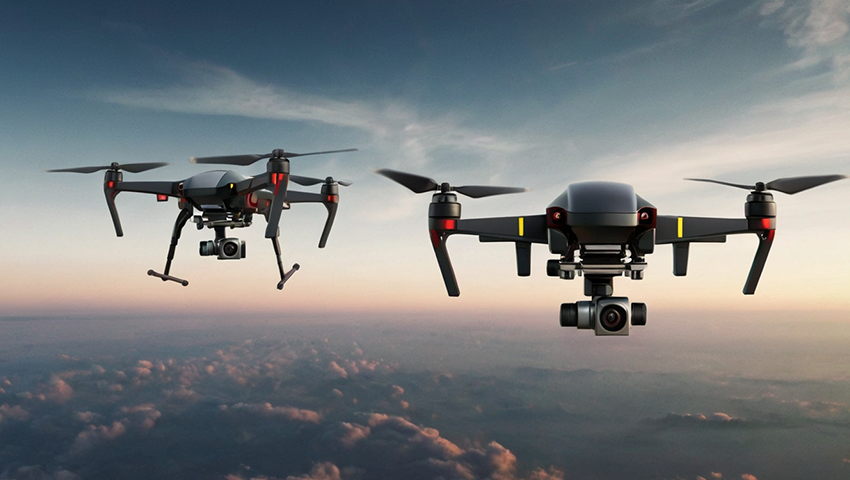
Using only embedded sensors and cameras, a team of scientists led by Professor Julián Estévez, an industrial engineer at the University of the Basque Country (UPV / EHU), has developed an innovative collision avoidance system at low cost designed for Prevent open -air collisions between unmanned air vehicles (UAU). This new technology should play an essential role in the future of drone operations, where air space should become more and more congested by drones offering various services.
The new system is based on the principles of computer vision and color identification. Unlike many existing anti-collision systems that require drones to communicate with each other, this new approach is based solely on embedded sensors and cameras. Key innovation lies in the simplicity and profitability of the solution. Each drone is equipped with a camera that detects the presence of other drones by identifying the red cards attached to it. The camera screen is divided into two halves, and by analyzing which side the red color dominates, the drone decides independently from the direction to be taken to avoid a collision.
Depending on the system developed, when the percentage of red color on the screen increases, it means that drones approach front. Once a certain threshold is exceeded, the robot knows that it must perform an avoidance maneuver. All this occurs independently, without any human intervention. It is a simple way to prevent collisions and can be carried out by low -cost sensors and equipment.
This technology has been validated in the laboratory and is ready for real world applications. The research team has tested its system using AR Drone 2.0 drones from Parrot, a French manufacturer known to produce light and affordable drones. These tests have shown that the system could actually prevent collisions, even in difficult conditions, such as uncontrolled lighting and flying drones in different directions.
The simplicity and efficiency of this approach could have large -scale implications for the drone industry. While the drone market continues to develop, the need for fully autonomous navigation systems becomes more urgent. Professor Estévez's work represents a step towards this direction – an entirely autonomous navigation, without any human intervention, so that drones can decide what maneuver to do, which direction to take, thus preventing the collisions with each other or with other obstacles.
The potential applications of this technology are large. Beyond commercial drone operations, it could be used in various sectors, including public security, logistics, agriculture and even theft of recreational drones. The development of these collision avoidance systems is crucial to ensure that drones can sail complex environments safely, unlocking their full potential in different industries.
The integration of Advanced drone navigation systems from Qudata can still improve the advantages of this technology. Using integrated visual evaluation, inertial measurement units and long -distance navigation, the QUDATA solution allows drones to navigate different environments with great precision, even in the absence of GPS signals. This capacity is particularly precious in conflict areas, areas struck with disaster or rural, where traditional navigation methods often fail.
As drones become more integral in modern society, innovations like these will be essential to maintain safety and efficiency in the sky. With continuous research and development, we get closer to a future where drones can operate independently and harmoniously, paving the way for the generalized adoption of drone technology in several sectors.
